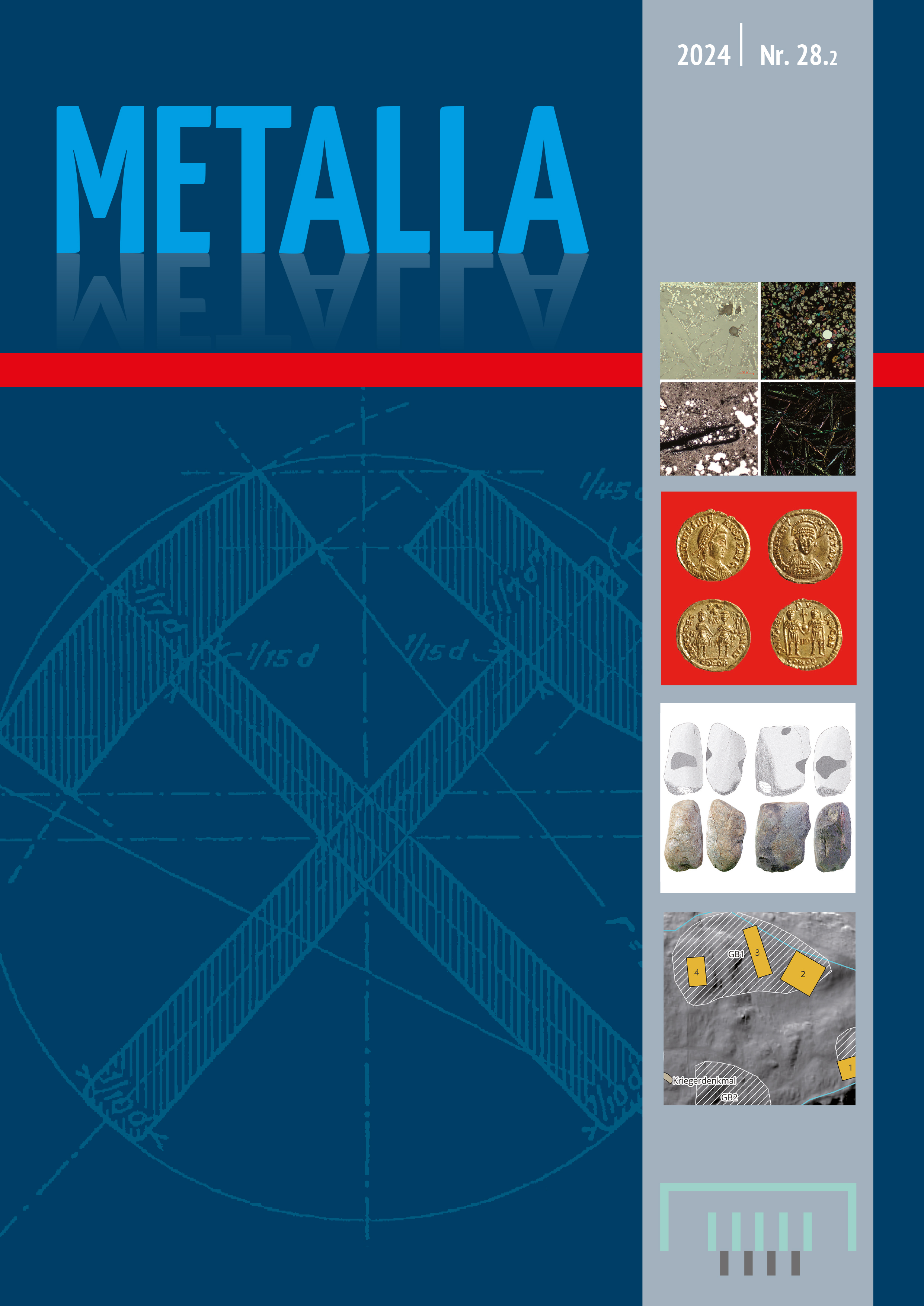Vol. 28 No. 2 (2024): METALLA

The article of Hashemi, Nezafati and Demant presents the results of a recent short archaeometallurgical survey in Luristan, Iran. Physicochemical and microscopic analyses of finds from five slag heaps indicated several ironworking workshops. Geochemical and isotopic analyses attested that the ores probably came from geochemically similar deposits in the wider region.
The article by Lamprecht, Haas and Hiebel presents the first results of the mining archaeological prospections in the Brixen Valley and at Grattenbergl/Kirchbichl (North Tyrol, Austria), as part of the investigation of the prehistoric copper mining landscape between Hohe Salve and Hahnenkamm. The artefacts found provided evidence of prehistoric mining at three sites.
The Article of Cucini and Facchinetti is dealing with the results of the investigation of solidi of the late antique Como Treasure. The examination allowed the study of the traces of workmanship, based on observations made with an optical microscope, and to reconstruct of the operative chain used in Late Antiquity mints.


